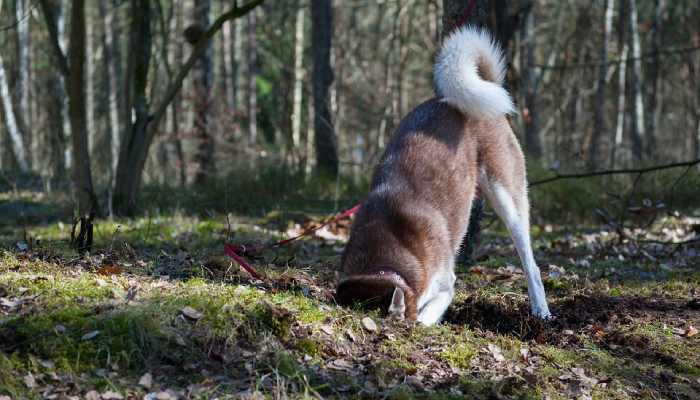Digging is a behaviour deeply ingrained in a dog’s DNA. It’s not just about creating craters in your backyard or unearthing your freshly planted garden; it’s an intrinsic part of their natural instincts. While many dog owners may view digging as a nuisance, it’s important to understand that digging serves a purpose for our canine companions. In this comprehensive article, we’ll delve into the reasons behind a dog’s affinity for digging and explore the numerous benefits it offers, both for their physical and mental well-being. Moreover, we’ll provide valuable insights into how to encourage and manage this behaviour, allowing dogs to dig with purpose and preserving the harmony of your shared space.
I. The Natural Instinct of Digging
Evolutionary Roots: Dogs are descendants of wolves, and digging has been a survival skill for millennia. In the wild, wolves dig for various reasons, such as creating dens, hiding food, and regulating body temperature.
Cooling Mechanism: On hot days, digging can help dogs access cooler soil, providing relief from the heat and preventing overheating.
Scent Exploration: Digging exposes them to a world of scents beneath the surface, allowing them to connect with their environment in a unique way.
II. Benefits of Digging for Dogs
Physical Exercise: Digging is a physically demanding activity that engages a dog’s muscles, contributing to their overall fitness.
Mental Stimulation: The process of digging requires problem-solving skills, stimulating a dog’s cognitive abilities and preventing boredom.
Stress Relief: Digging can serve as an emotional outlet, helping dogs alleviate stress, anxiety, and frustration.
Natural Pest Control: Dogs may dig to hunt or chase small burrowing animals like moles, helping to keep your yard pest-free.
Bonding Opportunity: Encouraging and participating in your dog’s digging activities can strengthen the bond between you and your furry friend.
III. How to Encourage Digging in a Positive Way
Designate a Digging Area: Set aside a specific area in your yard for digging, such as a sandbox or a designated corner. This keeps the rest of your garden intact.
Use Positive Reinforcement: Reward your dog with treats and praise when they dig in the designated area, reinforcing the desired behaviour.
Provide Digging Toys: Offer toys like interactive puzzle feeders or buried treats to encourage digging in a controlled manner.
Bury Toys and Treats: Burying toys and treats in the designated digging area gives your dog an incentive to dig there.
Offer Adequate Exercise: Ensure your dog receives enough physical exercise through daily walks, runs, or play sessions to reduce excess energy that may be channeled into digging.
Supervised Digging Time: Spend time with your dog in the designated digging area to supervise and interact while they dig.
IV. Managing Unwanted Digging
Redirect Behaviour: If your dog starts digging in an undesired area, gently redirect them to the designated digging zone.
Use Deterrents: Make the areas where you don’t want your dog to dig less appealing by using deterrents like rocks, chicken wire, or safe pet-friendly products.
Consistent Training: Be patient and consistent in your training efforts, as it may take time for your dog to learn where it’s acceptable to dig.
Consult a Professional: If digging becomes a persistent issue, consider consulting a professional dog trainer or behaviourist for guidance.
Understanding the benefits of digging for dogs and how to encourage this natural behaviour in a positive way can lead to a happier, healthier, and more mentally stimulated canine companion. By recognising the significance of digging in their lives and providing them with designated spaces and opportunities to engage in this activity, you can enhance the bond between you and your four-legged friend while preserving the beauty of your outdoor spaces. So, embrace the joy of unearthing the world alongside your dog, one paw at a time.



